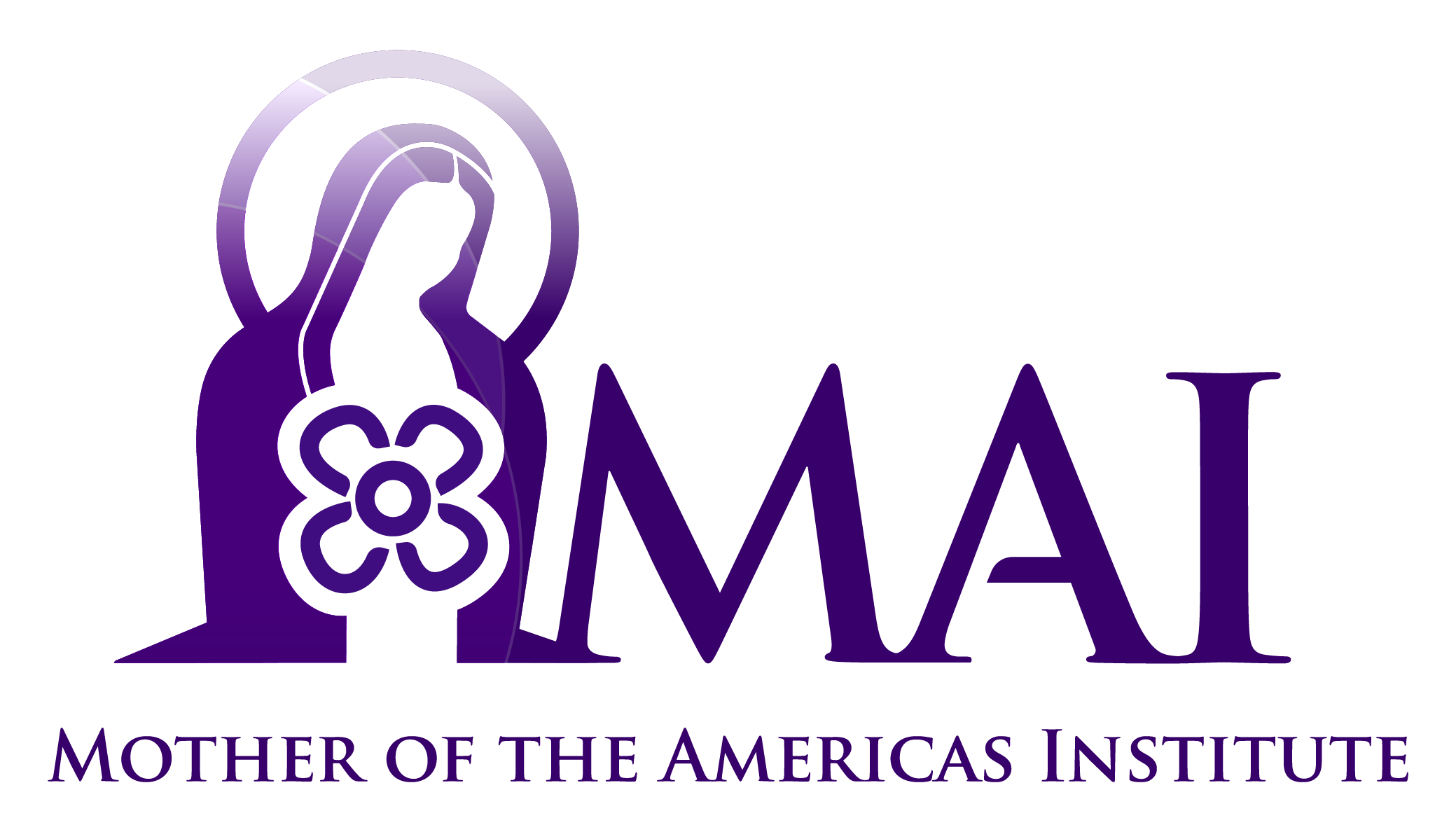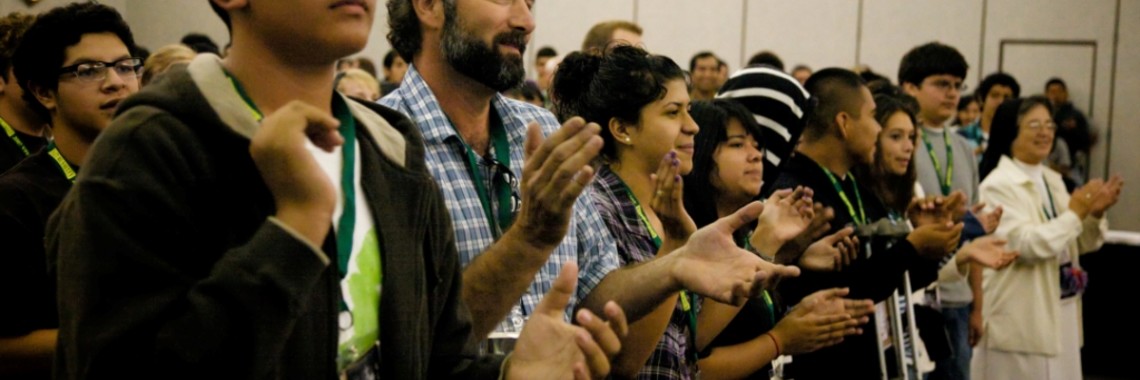The demographic constitution of the Catholic population in the United States is changing dramatically. This consideration is central for the New Evangelization in the United States. Currently the fastest growing demographic group is from Spanish-speaking countries. Hispanics (or Latinos) in the United States currently comprise about 16% of the total population according to the 2010 census (statistics for the demographics in this article can be found at usccb.org). About 68% of Hispanics are Catholic, making them around 43% of all Catholics in the US (by comparison Black/African American Catholics, the next largest demographic group, comprise less than 4% of US Catholics). Hispanics also comprise the largest demographic for US Catholic growth, accounting for about 71% of the growth in the Catholic Church in the US since 1960. The majority of Hispanic Catholic growth is due to immigration. Sociologists estimate that by 2020, those of Hispanic origin will cross into comprising the majority of US Catholics. Indeed, for those US Catholics born after 1982 (the so-called millennials), Hispanics already are in the majority, making up about 54% of the total US Catholic population in this age group. All of this indicates that among the different demographic groupings, Latinos will soon be the most numerous.
Yet, as helpful as demographic statistics can be in assessing the current challenges and predicting those of the near future, they can also be misleading. The first thing that must be said in this regard is that the term Hispanic was invented in the US and refers to those whose line of descent originates from a Spanish-speaking country. This could include the European Spanish, but exclude the Portuguese-speaking Brazilians; it could also exclude those from Spanish-speaking countries whose native languages are not Spanish. The term “Latino” can refer to those coming from Latin American countries, which could include Brazil, but exclude those from Spain. Moreover, one is Hispanic or Latino only in the United States. For example, in Mexico, someone from Argentina is an Argentino, and in Argentina, someone from Mexico is a Mejicano. In other words, the most important thing that those serving the Hispanic community must recognize is that there is no culturally monolithic Hispanic community. Indeed, the Hispanic demographic is not uniform in terms of national origin, race, culture, ethnicity, religion, social class or almost any other unifying feature.
That said, there are some commonalities among those whose origin is a Spanish-speaking country. Of course, by definition of the term “Hispanic” language is generally a common factor (not withstanding the earlier caveat), but even here there are differences in accent, idiomatic expression, slang and other subtleties, which at times can cause Spanish to be as much a point of diversity (and even division) as unity. In addition to language, those coming from Latin America share a similar, though certainly not identical, colonial and post-colonial experience. The unique, regional particularities make generalizations in this regard somewhat tenuous, but given this qualification, one can say that Latin American countries had a shared experience of Spanish (and Portuguese) colonialism, which had similar societal influences. Even after the Spanish were expelled, these countries shared similar post-colonial political experiences, which were often tumultuous and, all too often, corrupt. In most Latin American countries, class distinctions arose that were usually based upon race, and the often strained (or at least distant) relationship between the average Catholic and the institutional Church (particularly the bishop) was not uncommon.
These experiences often still mark the way many Latin American Catholics relate to the Church. Again, while the religion of Hispanic Catholics is not uniform, the majority of this group is Catholic (about 68%). Among the national groups, this percentage can range from a low of 49% Catholic (Puerto Rico) to 74% (Mexico). Those who are not Catholic belong to a Protestant denomination or claim no faith at all. Cuba has the largest percentage of those claiming no faith, with 14%. Another similarity is that Latin American cultures are imbued with Catholic liturgical life and popular Catholic piety. Such cultures have a formative affect on Catholics who practice their faith, but can also have an influence, if in a weaker manner, on non-practicing Catholics and non-Catholics (except for those who have been recently proselytized by the various Fundamentalist and Pentecostal denominations now active in Latin America). As a result, even among those who do not attend Mass, there tend to be elements of popular piety imbued in family and social life, though it is not unusual for this piety to be intermixed with aboriginal superstitions (for more on this, see The New Evangelization and Popular Piety). While among the majority, formal catechesis ranges from poor to non-existent, the informal catechesis from living in such a culture is something to which recourse should be made in trying to address the many challenges of the new evangelization. Finally, a strong sense of family, which includes the extended family, is common to those coming from Latin America. However, family life is also suffering among Hispanics with the same ills that are increasingly plaguing the general US population, including poverty, broken families, teen-age promiscuity and pregnancy, out of wedlock births, family violence, etc. In many immigrant communities, these problems have become acute.
It is important to note that while there are similarities, the differences among Hispanic peoples in the US are considerable. Among the different nations of origin and the variety of cultures, the majority of Latinos in the US are from Mexico (65%). However, significant percentages are present from Puerto Rico (9%), Cuba (4%), El Salvador (4%), the Dominican Republic (3%), Guatemala (2%), Colombia (2%), Honduras (1%), Ecuador (1%)and Peru (1%). Each country has its own national and cultural identity, but even within countries, there can be a wide range of cultural, class, racial and ethnic differences as well. Within and among these national groups, there can exist rivalries, tensions and, at times, animosity.
While it is not possible for the average person to become an expert in the particularities of the manifold Hispanic national and cultural differences and particular pastoral needs, anyone serving in a position of ministry or involved in the New Evangelization must be attentive to the fact he will have to negotiate and adapt approaches for these factors. The considerations for pastoral ministry and the New Evangelization overlap quite considerably with immigrant Catholics coming from Latin America. The pastoral needs of these Hispanic populations will not be met simply by sending the associate pastor away to learn to say Mass in Spanish and by putting up a picture of Our Lady of Guadalupe. In fact, one must recognize that outside of Mexico and the United States, Our Lady is not popularly venerated as Our Lady of Guadalupe. Unfortunately, national rivalries and cultural pride can cause resistance and even resentment among the non-Mexican national groups when Our Lady of Guadalupe is presented as the de facto Marian devotion for the Spanish-speaking population in a parish, because each culture has its own prized, Marian devotional tradition. The assumption that Our Lady of Guadalupe should take pride of place among Hispanics can, and often is, taken as a slight or even a purposeful affront by the non-Mexican national groups. Rather the pastoral needs will only be adequately met when they are integrated with the new methods and means of expression of the New Evangelization applied to the particular circumstances of this demographic.
In additional to national and cultural differences, other considerations for evangelization are manifold. Just under half, or about 47%, of Hispanics in the US have immigrated and not all consider the US home. While all socio-economic groups are represented among Hispanic immigrants, a large percentage is poor with 43% having household incomes under $30,000 per year, uneducated and un-catechized with almost 40% not having graduated high school; many are undocumented; many are itinerant seasonal workers; and among this group, many do not have experience, or at least a positive experience, with the institutional Church. All of this present challenges for pastoral ministry and the new evangelization because reaching a large segment of the Hispanic population means first going out and finding them where they live and work. Traditional methods of outreach and formation, if one dare make a case for their being effective among US born Catholics, certainly will not be adequate here. The situation is particularly urgent for a variety of reasons, not the least of which is that these immigrant, Hispanic Catholics are being actively “poached” by many Protestant faith traditions (Evangelicals, Pentecostals, Fundamentalists, and even mainline traditions) as well as other sects (e.g. Mormons, Jehovah’s Witness, etc.). Moreover, it is not long after their arrival that their exposure to the increasingly secular US culture means that those arriving as children and those born here are leaving the Church in large numbers. Yet, for the reason of their having an informal, cultural formation and in many cases, a simple faith expressed primarily through popular piety, they provide great potential bearing fruit for evangelistic efforts. Moreover, they can be a catalyst for renewal of the faith among other US Catholics, and they can be a catalyst for the renewal of US society.
What one might glean from all of this is that Hispanic ministry (and Hispanic Ministry for the New Evangelization) is perhaps more accurately understood simply as pastoral ministry to a plurality of diverse national and cultural groups from predominantly Spanish-speaking countries with some general similarities, but many more differences. While there are unique considerations for this demographic, there are also, as one would expect, similar evangelical challenges that exist among other minority demographics as well as with the current majority US Catholic demographic. Namely, all are in great need of kerygmatic evangelization followed by more effective, comprehensive and kerygmatic catechesis. All must be shown that to be Catholic means to surrender oneself to Christ, to become His disciple and to share this joy with others. The considerations for pastoral care and mission among Hispanics are applicable to every other demographic.
Even though the challenges are great, this demographic promises to bring great benefits to the Church in the US and to the broader US society. If it is true that the arising of indigenous forms of popular piety is a sign that a culture has been adequately imbued with the Gospel (see The New Evangelization and Culture), one might deduce that the dearth of indigenous forms of popular piety in the US (that is forms born here, not those imported from other cultures) that the US culture has never been adequately “evangelized.” A reason for this might be the dominant Calvinist (i.e. anti-liturgical) influence has kept US culture from forming and maturing as a fully Christian culture, that is, a Catholic culture. The cultural catechesis, the liturgical, Catholic culture that permeates the lives of those Catholics arriving from Latin American countries can serve as a catalyst for introducing a liturgical culture to the United States, one that previously existed, but was confined to US Catholic “ghettos” before World War II and was lost with Catholics being absorbed by the post-WWII suburbanization of America. Bringing about a liturgical, public culture in the US must be an important goal of the new evangelization and is critical for its long term success and fruitfulness.

